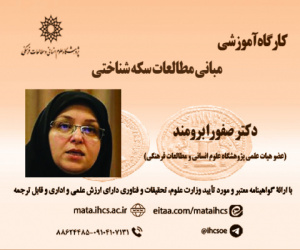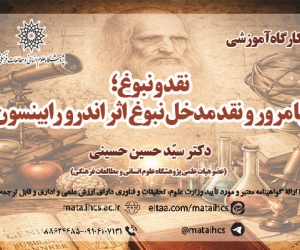طراحی الگوی شایستگی مدیران دانشگاه فرهنگیان (مقاله علمی وزارت علوم)
درجه علمی: نشریه علمی (وزارت علوم)
آرشیو
چکیده
هدف: مجموعه آموزش عالی در روند توسعه نقش انکارناپذیری برعهده دارد؛ بر این اساس، از دانشگاه به عنوان زیرمجموعه نظام آموزش عالی و نهادی متفکر و نوآور، انتظار می رود که با انجام رسالت های خود، گام های مؤثرتری در تحقق آرمان های جامعه بردارد و کشور را به سمت پیشرفت و رشد رهنمون سازد. در این بین، انتخاب مدیران شایسته، یکی از عناصر تأثیرگذار در تعالی دانشگاه است که می تواند با برخورداری از شایستگی های به روز مدیران، بر چالش های پیش رو فائق آید و در یک رویکرد به شدت رقابتی، صرف نظر از اندازه دانشگاه، شایستگی های مدیران خود را به طور مداوم پایش و اصلاح کند و بهبود بخشد؛ بنابراین انتخاب و انتصاب مدیران شایسته، از مسائل بسیار مهم و حساسی است که به شدت در کانون توجه قرار دارد. از طرف دیگر، جامعه و نظام آموزش وپرورش، دانشگاه فرهنگیان را مرجع علمی و مقر فرماندهی فکری می دانند که در نظام تربیتی نقش مشروعیت بخشی دارد و از آن انتظار دارند که روند فعلی مشکلات را معکوس و تهدیدها را به فرصت هایی ارزشمند تبدیل کند؛ بنابراین ضروری است که افرادی در جایگاه های مدیریت دانشگاه قرار گیرند که از شایستگی های ویژه و منحصربه فردی برخوردار باشند. در این راستا، طراحی الگوی شایستگی، می تواند گامی بسیار مهم در این مسیر محسوب شود و با ایجاد بانک اطلاعاتی مدیران، جانشین پروری، ارتقای قابلیت ها و بهبود فرایند تصمیم گیری در انتصاب مدیران دانشگاه با رویکرد ویژه به شایسته سالاری، در حل مسائل ناشی از ضعف های مدیریتی نقش بسزایی داشته باشد. بر این اساس، پژوهش حاضر با هدف طراحی الگوی شایستگی مدیران دانشگاه فرهنگیان اجرا شده است.روش: پژوهش حاضر از نظر هدف کاربردی و از نظر رویکرد ترکیبی و به صورت کیفی و کمّی بوده است. در بخش نخست، از روش کیفی اکتشافی و تحلیل مضمون استفاده شده است. در بخش کیفی، میدان مطالعه را سند تحول بنیادین آموزش وپرورش، بیانیه گام دوم انقلاب اسلامی و خبرگان تشکیل داده اند که با استفاده از نمونه گیری هدفمند با ۱۲ نفر از خبرگان حوزه مدیریت آموزشی و مدیران دانشگاه تا رسیدن به اشباع نظری مصاحبه شد؛ سپس متون مصاحبه ها، سند تحول بنیادین آموزش وپرورش و بیانیه گام دوم انقلاب اسلامی تحلیل مضمون و مضامین پایه از آن ها استخراج شد. در نهایت، شبکه مضامین با استفاده از کدگذاری، تحلیل و ترسیم شد. جامعه آماری پژوهش در مرحله کمّی، متشکل از ۶۲ نفر از مدیران دانشگاه فرهنگیان، ۵۸ نفر هیئت علمی با تحصیلات مدیریت آموزشی و ۲۰مدیرکل و معاون مدیرکل سازمان مرکزی و در مجموع، ۱۴۰ نفر بوده است. حجم نمونه آماری بر اساس جدول مورگان، به روش طبقه ای نسبتی ۱۰۳ نفر برآورد و انتخاب شد. ابزار پژوهش در بخش کیفی، مصاحبه های نیمه ساختاریافته و بررسی کتابخانه ای و در بخش کمّی، پرسش نامه ۱۴۰ گویه ای محقق ساخته بر اساس یافته های بخش کیفی بود. در تجزیه وتحلیل داده های بخش کیفی، از کدگذاری و نرم افزار مکس کیودا و در بخش کمّی، از نرم افزارهای اس پی اس اس و آموس استفاده شده است.یافته ها: بر اساس یافته های بخش کیفی پژوهش، الگوی شایستگی مدیران دانشگاه فرهنگیان، از ۲ مضمون فراگیر با عنوان شایستگی های عمومی و اختصاصی و ۱۰ مضمون سازمان دهنده تشکیل شده است که عبارت اند از: شایستگی های فرهنگی، اجتماعی، شخصیتی، اخلاقی، اعتقادی، رهبری، سازمانی، تخصصی، تحلیلی و اجرایی. همچنین ۱۴۰ مضمون پایه استخراج و تأیید شد. در بخش کمّی نیز با استفاده از تحلیل عاملی تأییدی، مدل مفهومی تدوین شده بر اساس دسته بندی مضمون های به دست آمده بررسی شد و نتایج آزمون های آماری نشان داد که الگوی شایستگی مدیران دانشگاه فرهنگیان، از برازش بسیار مطلوبی برخوردار است.نتیجه گیری: نتایج مطالعه حاضر می تواند گام مؤثری در راستای بهبود فرایندهای تجزیه وتحلیل مشاغل، برنامه ریزی نیروی انسانی، جذب، گزینش و انتخاب، انتصاب و به کارگماری، بهسازی و نگهداری منابع انسانی، ارزشیابی عملکرد، توانمندسازی ساختاری و روان شناختی، توسعه حرفه ای و توسعه تعهد حرفه ای مدیران دانشگاه فرهنگیان محسوب شود و با استفاده از نتایج آن، می توان زمینه تحقق نخبه گماری و تقویت نظام شایسته سالاری در مدیریت را فراهم ساخت؛ زیرا استقرار چنین رویکرد یکپارچه ای در مدیریت دانشگاه، به بهره وری و تضمین کیفیت نظام مدیریتی دانشگاه فرهنگیان منجر خواهد شد.Designing the Competency Model of Farhangian University Administrators
ObjectiveThe higher education system plays a pivotal role in driving overall societal development. Universities, as key subsets of this system, serve as thoughtful and innovative institutions tasked with advancing society’s ideals and contributing to national progress and growth. Central to this mission is the effective selection of competent managers, who are instrumental in addressing challenges and steering universities toward excellence. In an era marked by heightened competition, the continuous monitoring, refinement, and improvement of managerial competencies is essential, regardless of a university's size. The selection and appointment of managers with exceptional capabilities are therefore critical, garnering significant attention. Within this context, Farhangian University holds a unique position as a scholarly authority and a hub of intellectual leadership within the education system. The university is expected to address existing challenges, transform threats into opportunities, and lead systemic advancements. Given these expectations, it is imperative to appoint managers with distinctive competencies tailored to the university's mission. Designing a competency model for university administrators is a crucial step toward achieving this goal. Such a model provides a foundation for creating a database of qualified managers, implementing succession planning, enhancing managerial skills, and fostering meritocracy in appointments. In light of these considerations, the present study was conducted to develop a competency model for administrators at Farhangian University.MethodsThis applied research employed a combined qualitative and quantitative approach. The initial phase utilized an exploratory qualitative method with thematic analysis to establish foundational insights. Key sources included educational policy documents such as the Fundamental Transformation of Education and the Statement of the Second Step of the Islamic Revolution. In-depth interviews were conducted with 12 experts in educational management and university administration, continuing until theoretical saturation was achieved. Data from the qualitative phase were analyzed using thematic coding, culminating in a comprehensive theme network. The quantitative phase involved 140 participants, including 62 administrators from Farhangian University, 58 faculty members specializing in educational management, and 20 general and deputy general managers from the central organization. A sample size of 103 was determined using Morgan’s table and selected via proportional stratified sampling. Research tools included semi-structured interviews and document reviews for the qualitative phase and a 140-item researcher-designed questionnaire, based on qualitative findings, for the quantitative phase. Data analysis was performed using MAXQDA software for the qualitative phase and SPSS and AMOS software for the quantitative phase.ResultsThe research identified a comprehensive competency model for Farhangian University administrators, encompassing two broad themes: general and specific competencies. These were further categorized into 10 organizing themes: cultural, social, personality, professional ethics, belief, leadership, organizational, specialized, analytical, and executive competencies. A total of 140 basic themes were extracted and validated. Confirmatory factor analysis was employed to validate the conceptual model derived from these themes. Statistical tests confirmed the model's goodness of fit, supporting its applicability to real-world contexts.ConclusionThe findings of this study provide a robust framework for enhancing various managerial processes at Farhangian University. These include job analysis, human resource planning, recruitment, selection, appointment, performance evaluation, and professional development. The research also underscores the importance of structural and psychological empowerment, fostering professional growth, and deepening commitment among university managers. By aligning managerial practices with a merit-based system, the proposed competency model offers a pathway to improving productivity and ensuring the quality and effectiveness of Farhangian University's management system. Implementing this model is expected to strengthen the university's role as a leader in educational innovation and societal advancement.









